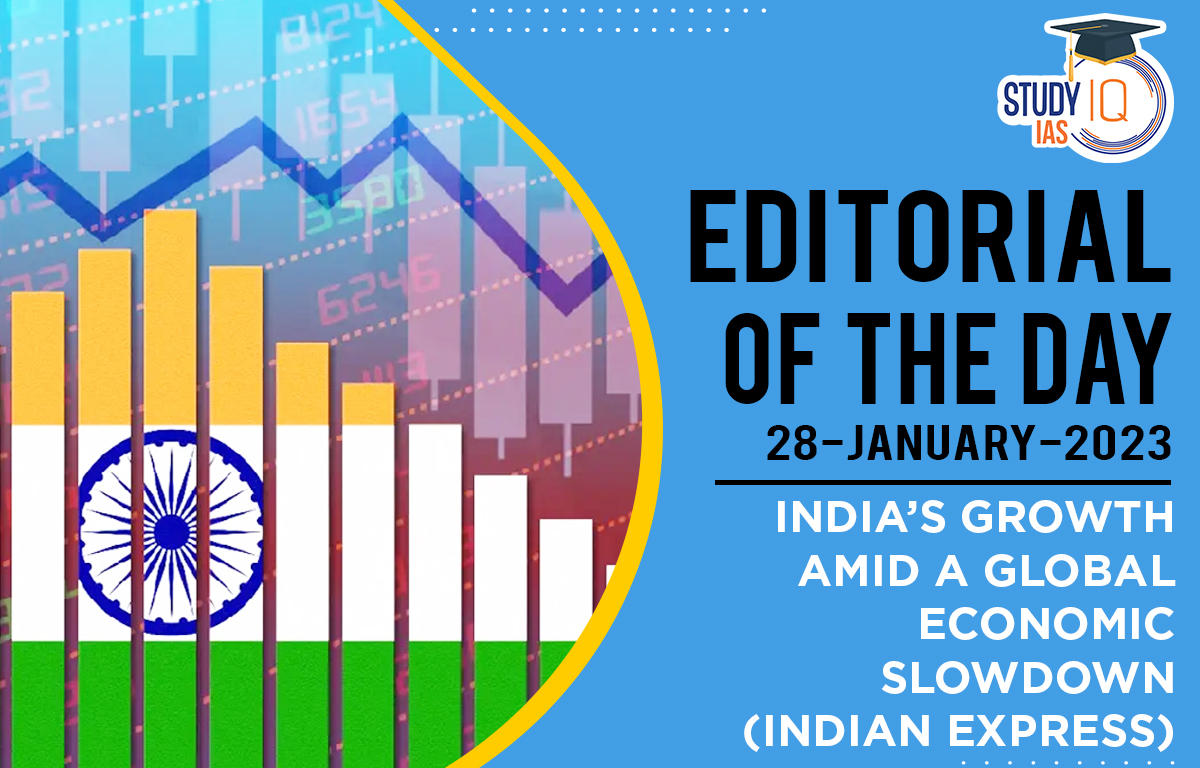Table of Contents
Context of the Article: Global Slowdown is on the way, but India has done relatively well despite multiple shocks in the past three years.
- The reasons include its “double diversity” advantage, arriving at a feasible set of reforms, and the success of counter-cyclical policy in smoothing shocks.
Advantages of a Large and Diverse Country Highlighted by the Author
- Lesser inter-dependency of sectors: In the global slowdown some sectors continue to do well despite others slowing.
- In the current scenario manufacturing exports slow down, and services exports and remittances are robust, reducing the current account deficit. The trend growth in digitization is powering the growth of tier 2 and 3 cities.
- Global diversification: India’s Global diversification is away from over-dependence on any one country.
- The China+1 and Europe+1 factor will continue to create opportunities for India.
Author’s Criticism of India’s Growth
- The fundamental issues with the Indian Economy: Growth cannot sustain without major reforms. This view points to the slowdown of the last decade and a growth crash post-pandemic.
- India’s growth recovery, however, is one of the highest among major economies. Since it exceeds that of countries with a worse slump, it is not just because of the base effect.
- Faulty GDP measurement: Official figures are very much in line with high frequency and other economic indicators.
- Revised figures were expected to show the destruction of small firms. But evidence coming in is pointing differently.
- India cannot grow without a push from global growth: It is true India’s highest growth was in the 2000s when there was a global growth boom.
- Better policies, including openness to new technology, trade, and more efficient forms of organization, help the economy grow rapidly after crossing a certain threshold and double per capita incomes in 10 years.
How Policies Succeeded during the Pandemic?
- Relaxing tight monetary and financial conditions: This move showed signs of recovery in high-frequency data before Covid-19 hit in March 2020. These policies aided in good recoveries between Covid-19 waves.
- Counter-cyclical monetary policy: This policy helped restrain deficit expansion. Inflation-reducing action in the food and energy sectors allowed monetary policy to support the growth recovery while limiting inflation, anchoring inflation expectations, and reducing risk in the economy.
- Lower volatility of interest and exchange rates: It helped keep real interest rates smoothly below growth rates.
- Facilitation: As industry and government worked together, the focus shifted from disciplining to facilitating industry growth.
- Right industrial policy: The industrial policy sought to encourage export competition, sunrise high-tech, and green industries, capture opportunities in supply-chain diversification and create jobs.
- Rationalizing laws, regulations, and taxes; easing compliance; improving infrastructure, and lowering logistics costs, all helped in production.
Conclusion
- India can continue to do well, if it learns from the pandemic period in smoothing shocks and continues to undertake feasible low-resistance reforms that further its advantages.
- This middle path may help the economy find its way back to faster growth — 7 percent can double real income in 10 years; 9 percent can double per capita income.


 Donuru Ananya Reddy (Rank 3) UPSC 2023 T...
Donuru Ananya Reddy (Rank 3) UPSC 2023 T...
 UPPSC Final Cut Off 2023 Released, Check...
UPPSC Final Cut Off 2023 Released, Check...
 Animesh Pradhan (Rank 2) UPSC 2023 Toppe...
Animesh Pradhan (Rank 2) UPSC 2023 Toppe...

















